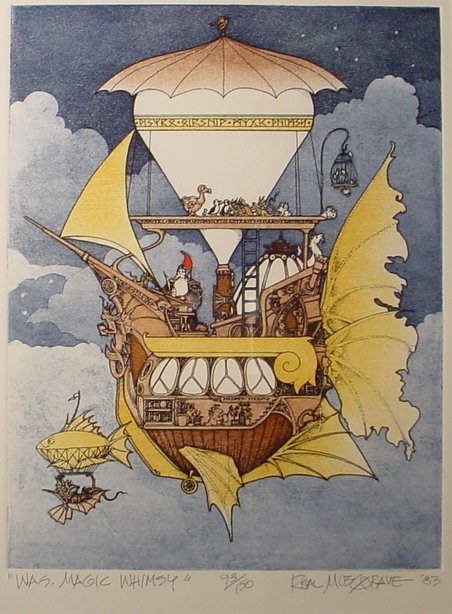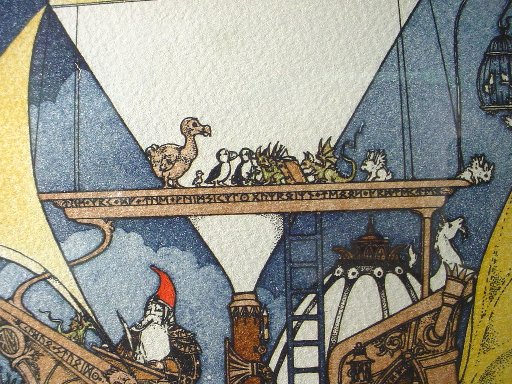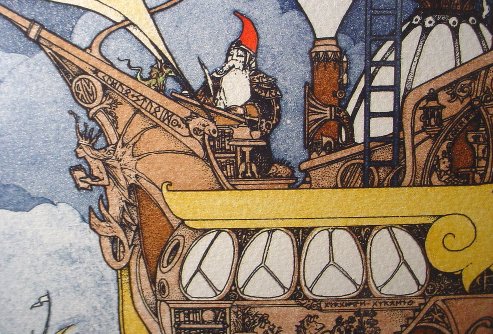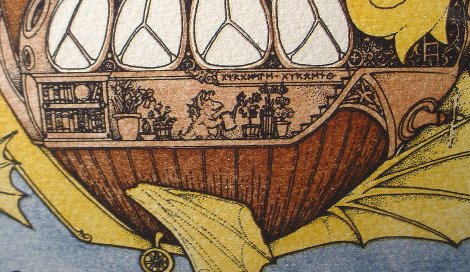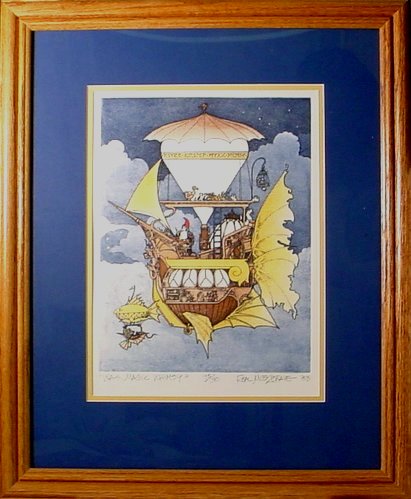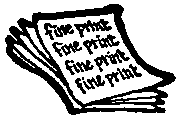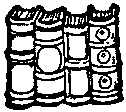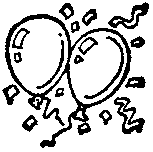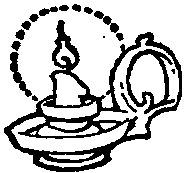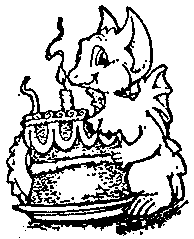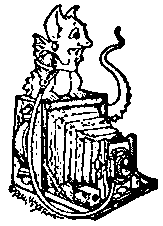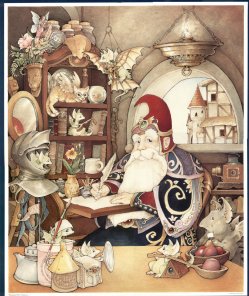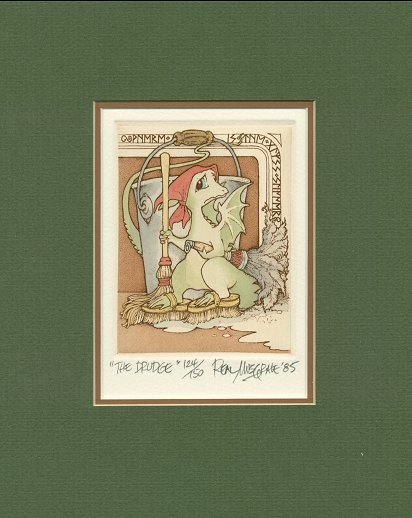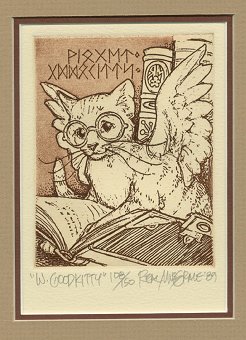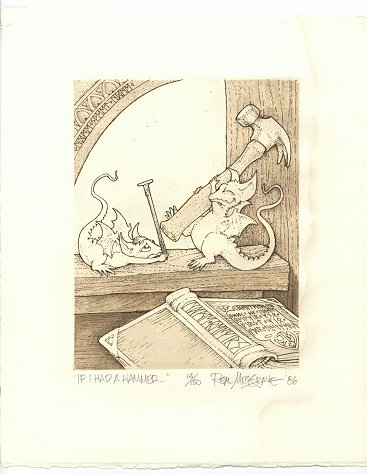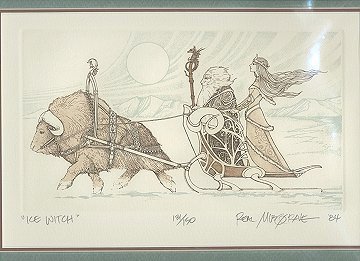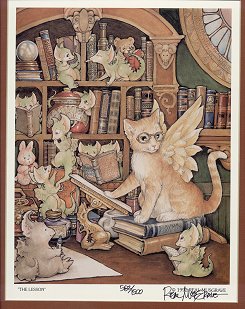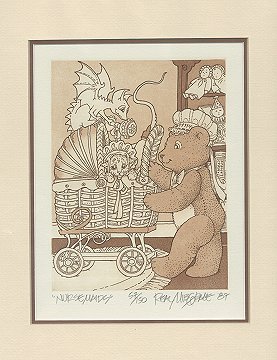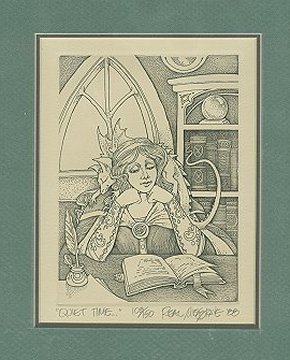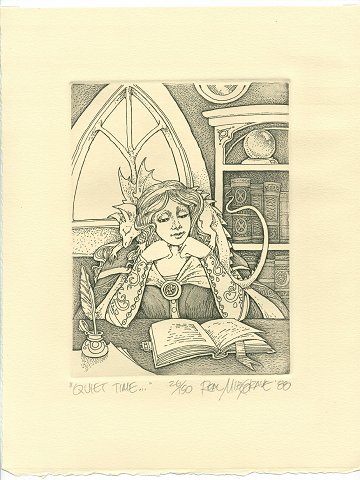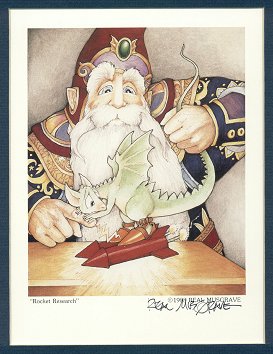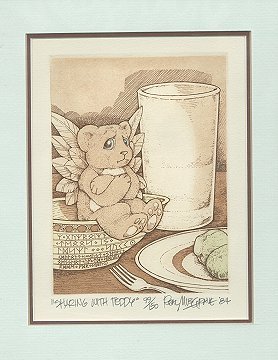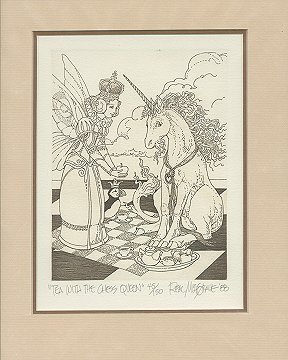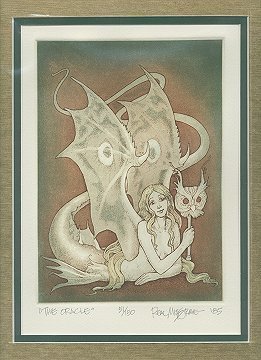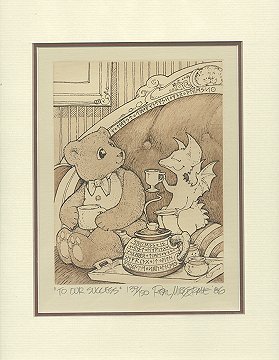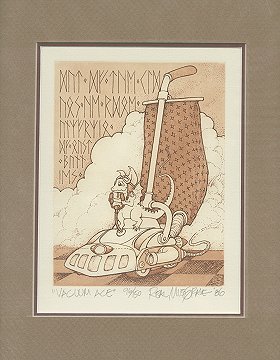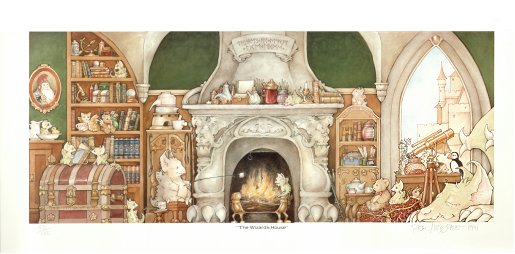
PLEASE NOTE: This is an archive of our original site, for informational purposes only. We no-longer have a sales catalogue.
The artwork by Real Musgrave, including prints, cards, etchings, posters, and rubber stamps, that we used to list on our catalogue.
Note that this list may include information specific to the particular copy we last sold, including condition and price. It also includes additional notes by Real on a couple of the etchings, particularly on the piece entitled "W.A.S Magic Wimsey".
I don't know anything about this other than what is obvious - it appears to have been a promotional item for one of the Peter Jackson The Jeweller stores. Presumably back in 1994 they sold Pocket Dragons. In the UK, a number of jewellery stores carried Pocket Dragons.
The book is A4 size (folded and stapled A3), 8-1/4" by 11-5/8", which is slightly taller and narrower than standard US letter size. It has a cover and 16 pages, and the only blank page is the inside front cover. The front and back are printed in green ink; the interior pages are printed in black ink.
This is a great publication, but it suffers from having been printed on paper that is not heavy enough, or at least not opaque enough, to prevent show-through of the image on the other side of each sheet. I do find that a sheet of black paper placed behind the page you are looking at works wonders, though (it's how I got the photos of the pages above).
I know if you bought this it would likely not be to actually color it in, but if you did you should use crayons or colored pencils. Definitely not felt-tipped pens or watercolors. Actually, my suggestion would be to make photocopies of the pages and color those in instead. Photocopying for your own use would be OK, provided you didn't distribute the copies.
The book and artwork is copyright 1994 by Real Musgrave.

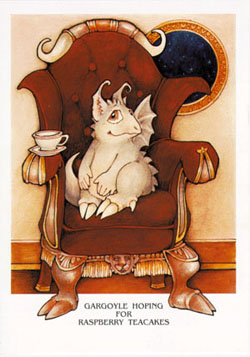
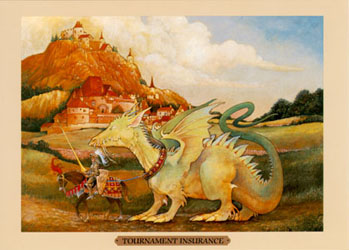

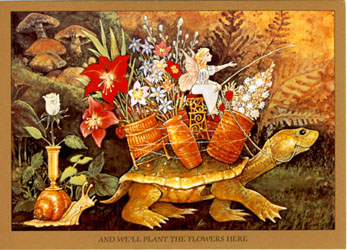
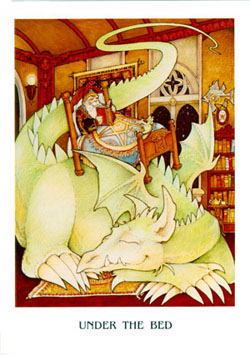


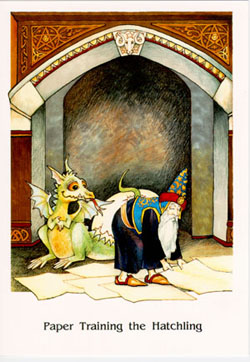


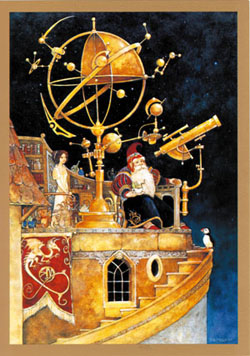
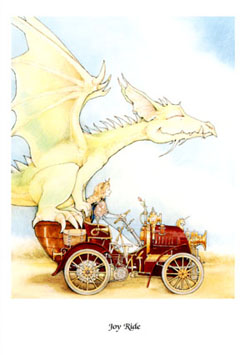

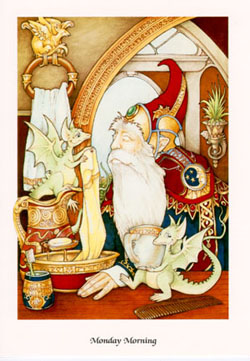
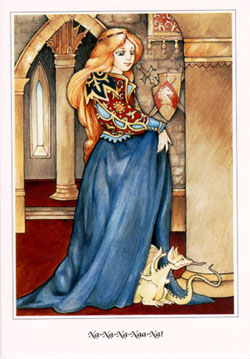
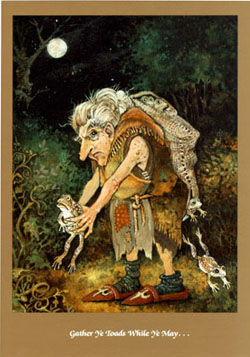

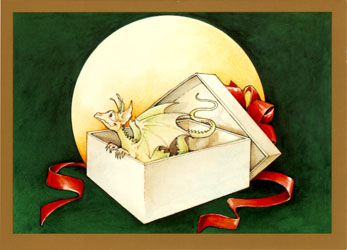
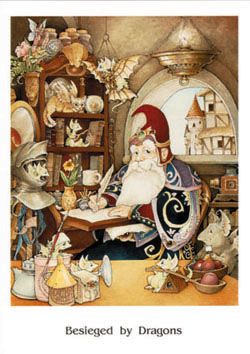
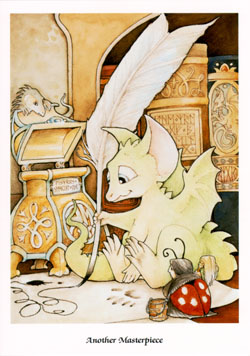
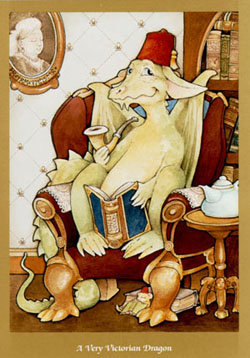
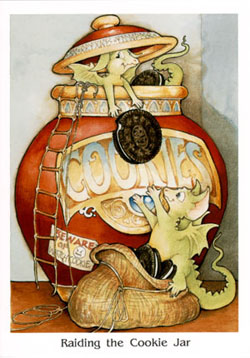

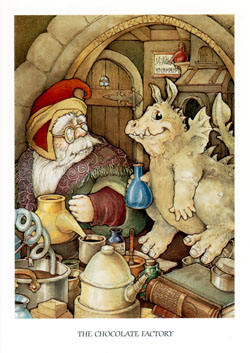

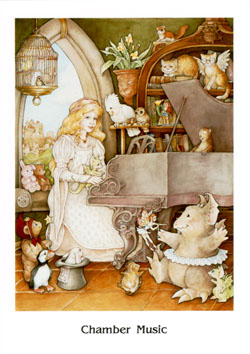



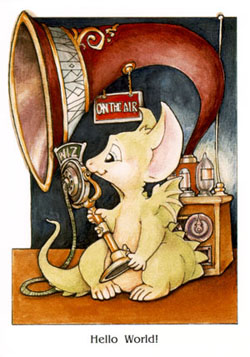
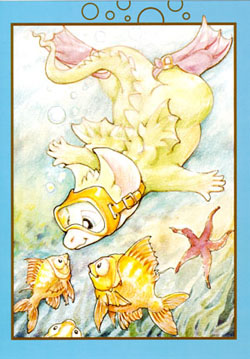
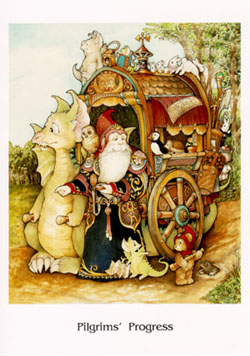
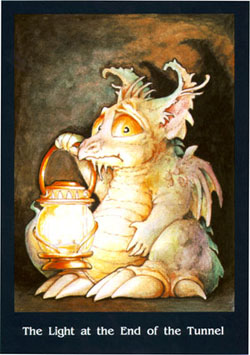

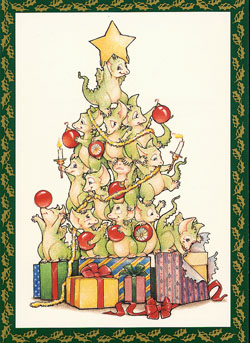
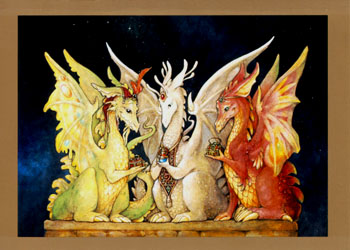
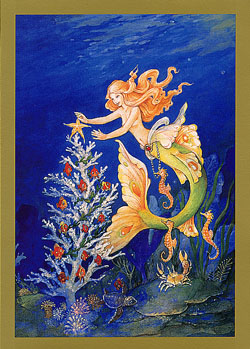
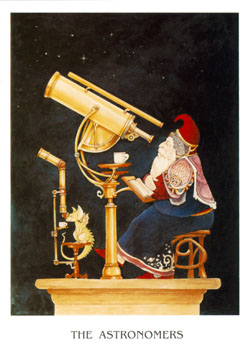
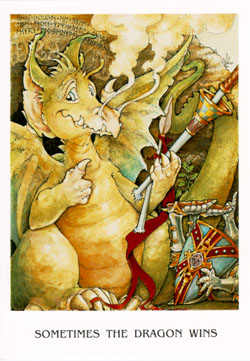
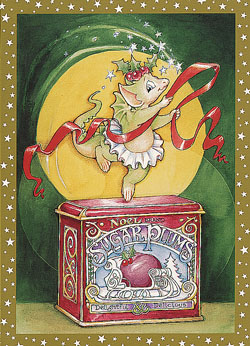


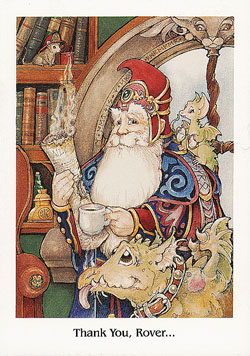
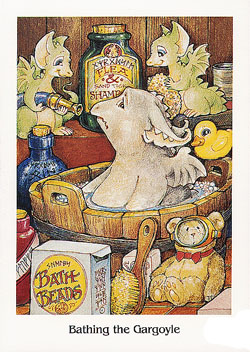


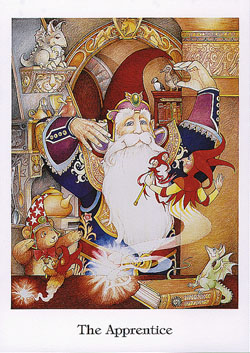
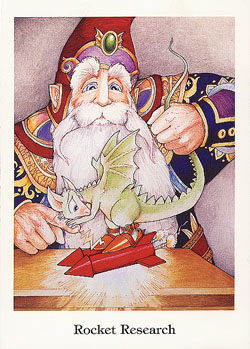
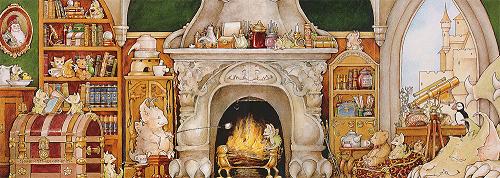
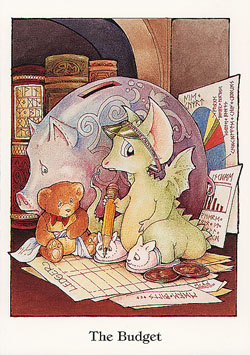
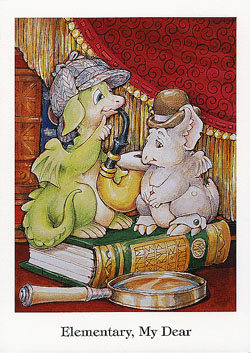



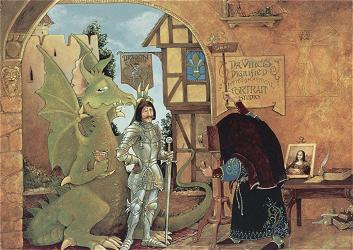


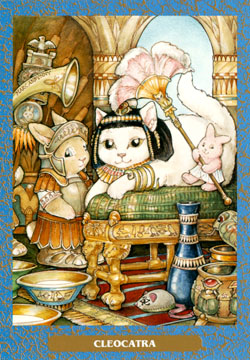

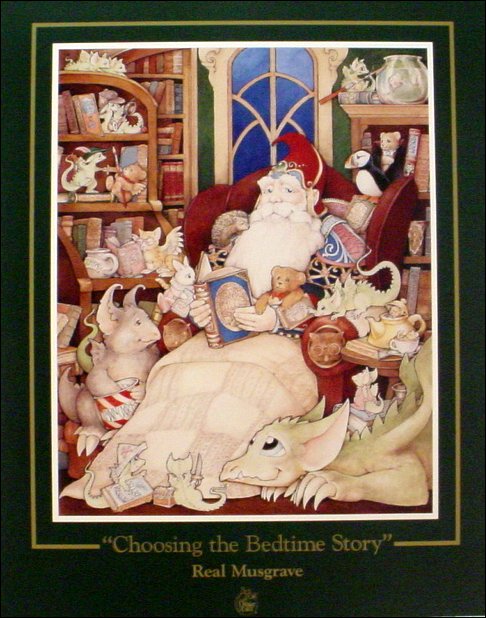
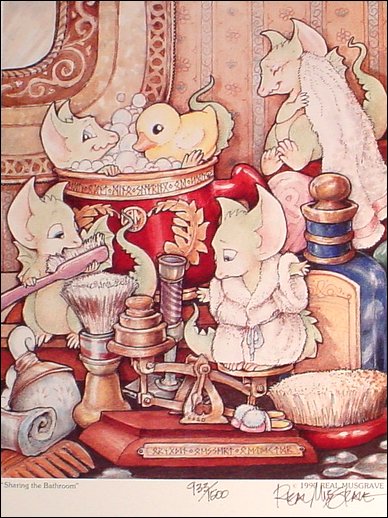
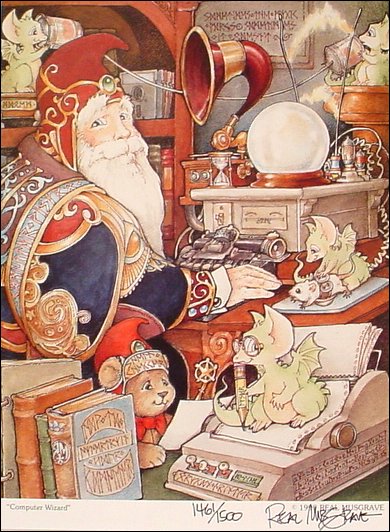
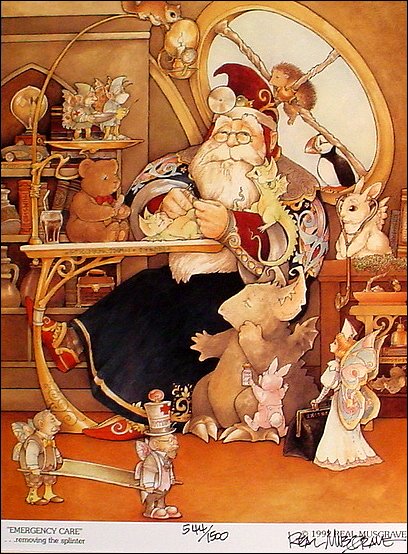
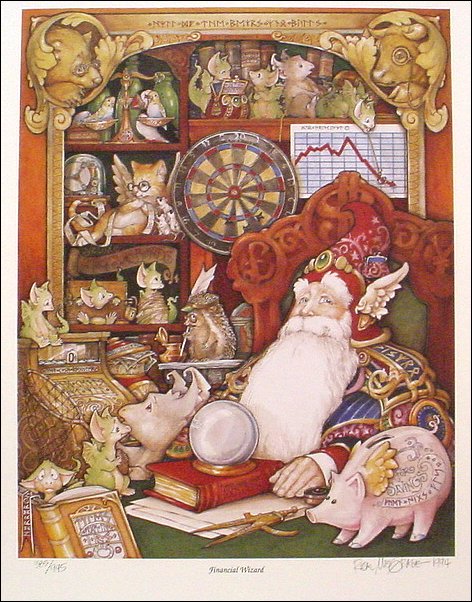
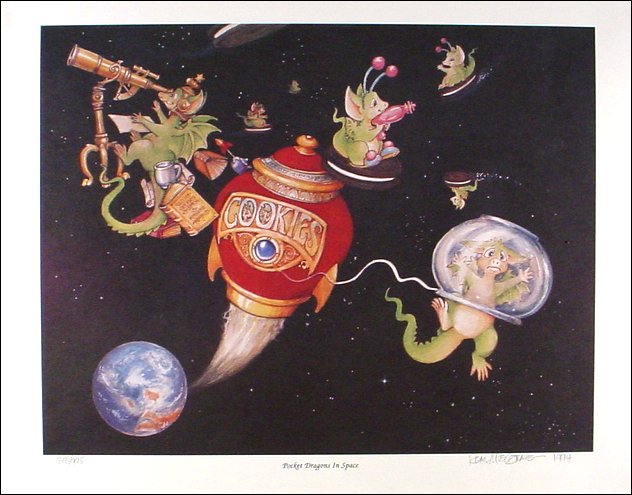
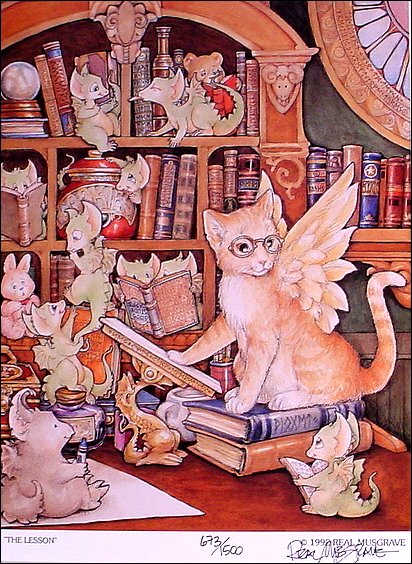

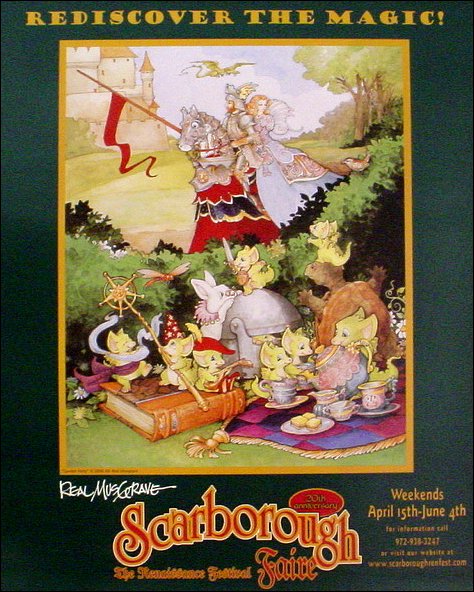

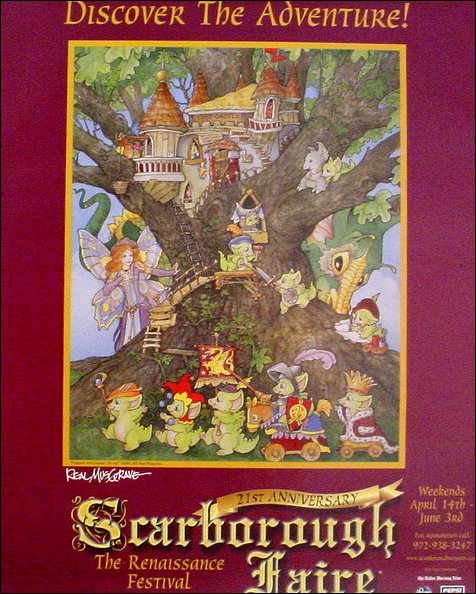



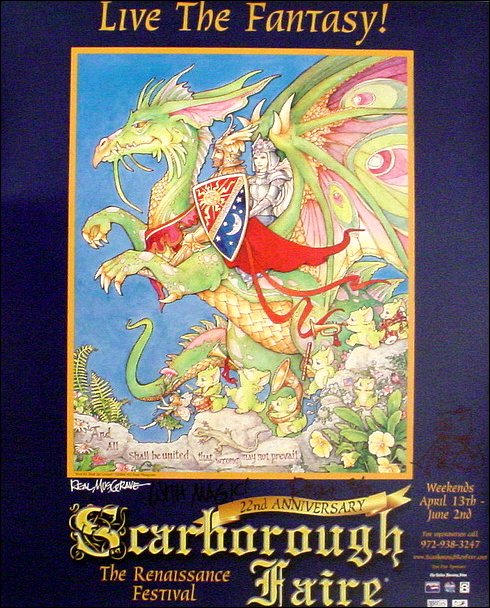


Artist's Notes on How The Print Was Made
by Real Musgrave
"One of my BFA degrees was in printmaking. So I love the look and loved the process but I can hardly imagine doing it now. Too few people realized how intense the process was. Sadly, many collectors actually thought that a color lithograph reproduced from a painting was a superior print. And that was SO much easier! After a while it no longer seemed worth all the effort. My etching press is packed up in grease and stored away. But I hope you can explain to people just why these are considered such a unique art form. And for anyone interested in longevity, the materials are hard to beat. I have seen a 500 year old engraving by Albrecht Durer that is as beautiful today as the day it was pulled.
"The process I used in almost all of my intaglio etchings is called aquatint. It involves stopping out (and then removing) various parts of the plate with a "resist" and then putting the plate in an acid bath several times. First the line work is etched. Then by trial and error --with several proofs for each tone, to check progress-- the mid-tones are etched into the plate. Ink is rubbed onto the plate with cheesecloth, then wiped until just the right amount is left on the roughened areas. The plate is put onto the bed of a hand cranked press. Then a deckled sheet of hand-made cotton rag paper, which has been soaked in water and slightly blotted (to make it absorb the ink better), is placed on that. Finally, layers of felt blankets go on top and the whole thing is cranked through. When it works, you get an etching! But the plate wears out fairly quickly, so not very many..."
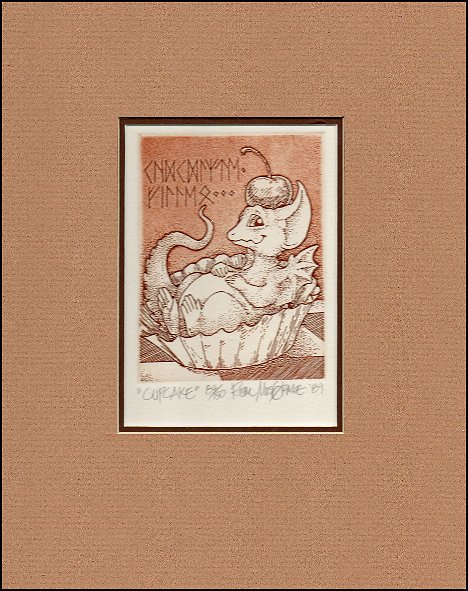
Artist's Notes on How The Print Was Made
by Real Musgrave
"One of my BFA degrees was in printmaking. So I love the look and loved the process but I can hardly imagine doing it now. Too few people realized how intense the process was. Sadly, many collectors actually thought that a color lithograph reproduced from a painting was a superior print. And that was SO much easier! After a while it no longer seemed worth all the effort. My etching press is packed up in grease and stored away. But I hope you can explain to people just why these are considered such a unique art form. And for anyone interested in longevity, the materials are hard to beat. I have seen a 500 year old engraving by Albrecht Durer that is as beautiful today as the day it was pulled.
"The process I used in almost all of my intaglio etchings is called aquatint. It involves stopping out (and then removing) various parts of the plate with a "resist" and then putting the plate in an acid bath several times. First the line work is etched. Then by trial and error --with several proofs for each tone, to check progress-- the mid-tones are etched into the plate. Ink is rubbed onto the plate with cheesecloth, then wiped until just the right amount is left on the roughened areas. The plate is put onto the bed of a hand cranked press. Then a deckled sheet of hand-made cotton rag paper, which has been soaked in water and slightly blotted (to make it absorb the ink better), is placed on that. Finally, layers of felt blankets go on top and the whole thing is cranked through. When it works, you get an etching! But the plate wears out fairly quickly, so not very many..."
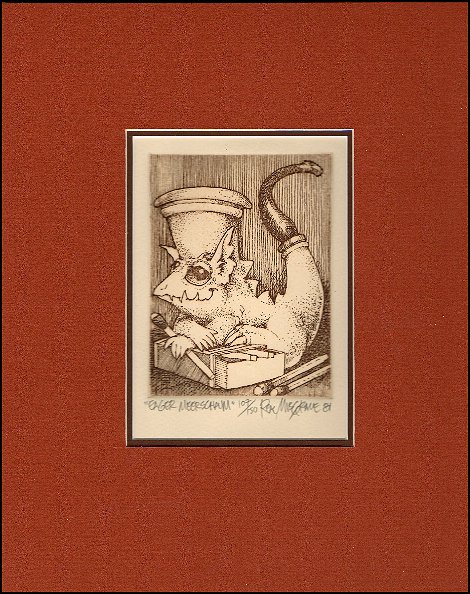
Artist's Notes on How The Print Was Made
by Real Musgrave
"One of my BFA degrees was in printmaking. So I love the look and loved the process but I can hardly imagine doing it now. Too few people realized how intense the process was. Sadly, many collectors actually thought that a color lithograph reproduced from a painting was a superior print. And that was SO much easier! After a while it no longer seemed worth all the effort. My etching press is packed up in grease and stored away. But I hope you can explain to people just why these are considered such a unique art form. And for anyone interested in longevity, the materials are hard to beat. I have seen a 500 year old engraving by Albrecht Durer that is as beautiful today as the day it was pulled.
"The process I used in almost all of my intaglio etchings is called aquatint. It involves stopping out (and then removing) various parts of the plate with a "resist" and then putting the plate in an acid bath several times. First the line work is etched. Then by trial and error --with several proofs for each tone, to check progress-- the mid-tones are etched into the plate. Ink is rubbed onto the plate with cheesecloth, then wiped until just the right amount is left on the roughened areas. The plate is put onto the bed of a hand cranked press. Then a deckled sheet of hand-made cotton rag paper, which has been soaked in water and slightly blotted (to make it absorb the ink better), is placed on that. Finally, layers of felt blankets go on top and the whole thing is cranked through. When it works, you get an etching! But the plate wears out fairly quickly, so not very many..."

Artist's Notes on How The Print Was Made
by Real Musgrave
"One of my BFA degrees was in printmaking. So I love the look and loved the process but I can hardly imagine doing it now. Too few people realized how intense the process was. Sadly, many collectors actually thought that a color lithograph reproduced from a painting was a superior print. And that was SO much easier! After a while it no longer seemed worth all the effort. My etching press is packed up in grease and stored away. But I hope you can explain to people just why these are considered such a unique art form. And for anyone interested in longevity, the materials are hard to beat. I have seen a 500 year old engraving by Albrecht Durer that is as beautiful today as the day it was pulled.
"The process I used in almost all of my intaglio etchings is called aquatint. It involves stopping out (and then removing) various parts of the plate with a "resist" and then putting the plate in an acid bath several times. First the line work is etched. Then by trial and error --with several proofs for each tone, to check progress-- the mid-tones are etched into the plate. Ink is rubbed onto the plate with cheesecloth, then wiped until just the right amount is left on the roughened areas. The plate is put onto the bed of a hand cranked press. Then a deckled sheet of hand-made cotton rag paper, which has been soaked in water and slightly blotted (to make it absorb the ink better), is placed on that. Finally, layers of felt blankets go on top and the whole thing is cranked through. When it works, you get an etching! But the plate wears out fairly quickly, so not very many..."
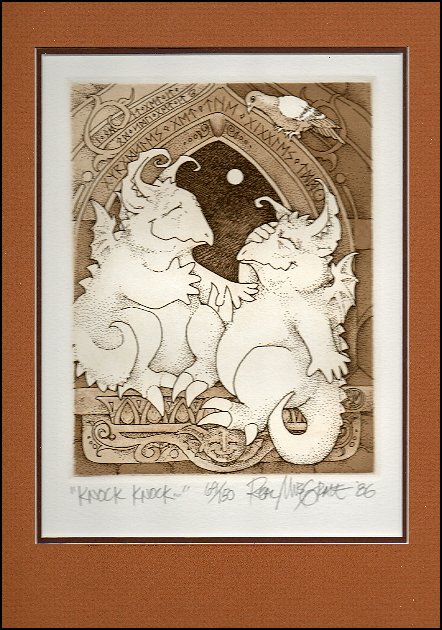
Artist's Notes on How The Print Was Made
by Real Musgrave
"One of my BFA degrees was in printmaking. So I love the look and loved the process but I can hardly imagine doing it now. Too few people realized how intense the process was. Sadly, many collectors actually thought that a color lithograph reproduced from a painting was a superior print. And that was SO much easier! After a while it no longer seemed worth all the effort. My etching press is packed up in grease and stored away. But I hope you can explain to people just why these are considered such a unique art form. And for anyone interested in longevity, the materials are hard to beat. I have seen a 500 year old engraving by Albrecht Durer that is as beautiful today as the day it was pulled.
"The process I used in almost all of my intaglio etchings is called aquatint. It involves stopping out (and then removing) various parts of the plate with a "resist" and then putting the plate in an acid bath several times. First the line work is etched. Then by trial and error --with several proofs for each tone, to check progress-- the mid-tones are etched into the plate. Ink is rubbed onto the plate with cheesecloth, then wiped until just the right amount is left on the roughened areas. The plate is put onto the bed of a hand cranked press. Then a deckled sheet of hand-made cotton rag paper, which has been soaked in water and slightly blotted (to make it absorb the ink better), is placed on that. Finally, layers of felt blankets go on top and the whole thing is cranked through. When it works, you get an etching! But the plate wears out fairly quickly, so not very many..."
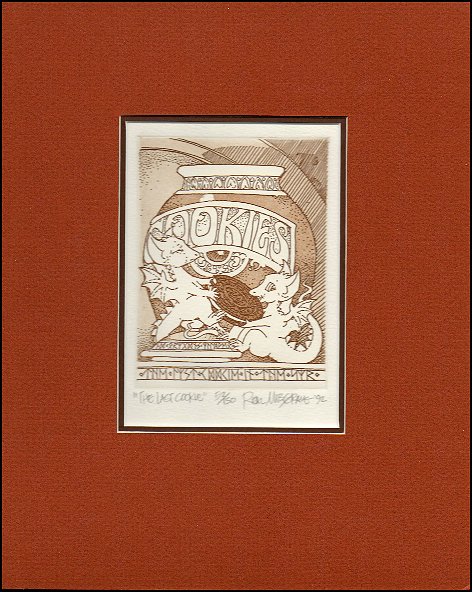
Artist's Notes on How The Print Was Made
by Real Musgrave
"One of my BFA degrees was in printmaking. So I love the look and loved the process but I can hardly imagine doing it now. Too few people realized how intense the process was. Sadly, many collectors actually thought that a color lithograph reproduced from a painting was a superior print. And that was SO much easier! After a while it no longer seemed worth all the effort. My etching press is packed up in grease and stored away. But I hope you can explain to people just why these are considered such a unique art form. And for anyone interested in longevity, the materials are hard to beat. I have seen a 500 year old engraving by Albrecht Durer that is as beautiful today as the day it was pulled.
"The process I used in almost all of my intaglio etchings is called aquatint. It involves stopping out (and then removing) various parts of the plate with a "resist" and then putting the plate in an acid bath several times. First the line work is etched. Then by trial and error --with several proofs for each tone, to check progress-- the mid-tones are etched into the plate. Ink is rubbed onto the plate with cheesecloth, then wiped until just the right amount is left on the roughened areas. The plate is put onto the bed of a hand cranked press. Then a deckled sheet of hand-made cotton rag paper, which has been soaked in water and slightly blotted (to make it absorb the ink better), is placed on that. Finally, layers of felt blankets go on top and the whole thing is cranked through. When it works, you get an etching! But the plate wears out fairly quickly, so not very many..."
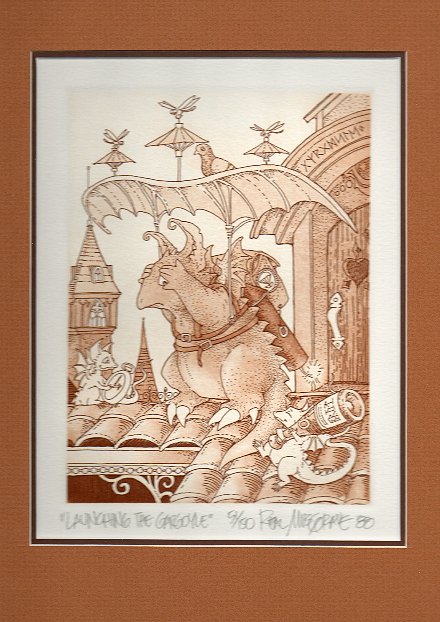
Autographed on the front endpaper flyleaf by Real and Muff, including a Pocket Dragon remarque by Real.
Illustrated children's book. 8 x 10 inches, 32 pages of all new art (half pencil and half watercolours). Casebound with glossy colour hardback cover.
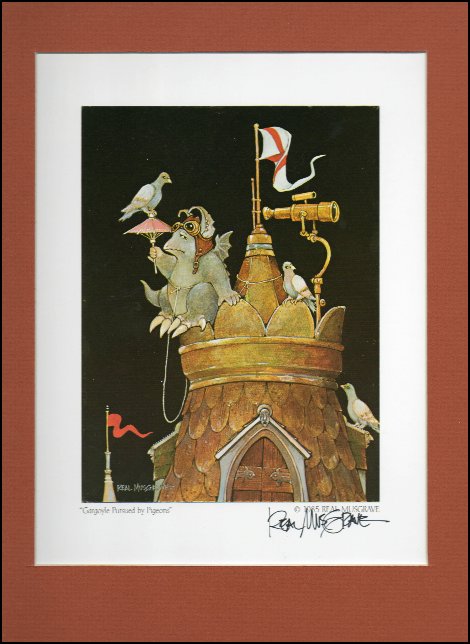
Artist's Notes on How The Print Was Made
by Real Musgrave
"One of my BFA degrees was in printmaking. So I love the look and loved the process but I can hardly imagine doing it now. Too few people realized how intense the process was. Sadly, many collectors actually thought that a color lithograph reproduced from a painting was a superior print. And that was SO much easier! After a while it no longer seemed worth all the effort. My etching press is packed up in grease and stored away. But I hope you can explain to people just why these are considered such a unique art form. And for anyone interested in longevity, the materials are hard to beat. I have seen a 500 year old engraving by Albrecht Durer that is as beautiful today as the day it was pulled.
"The process I used in almost all of my intaglio etchings is called aquatint. It involves stopping out (and then removing) various parts of the plate with a "resist" and then putting the plate in an acid bath several times. First the line work is etched. Then by trial and error --with several proofs for each tone, to check progress-- the mid-tones are etched into the plate. Ink is rubbed onto the plate with cheesecloth, then wiped until just the right amount is left on the roughened areas. The plate is put onto the bed of a hand cranked press. Then a deckled sheet of hand-made cotton rag paper, which has been soaked in water and slightly blotted (to make it absorb the ink better), is placed on that. Finally, layers of felt blankets go on top and the whole thing is cranked through. When it works, you get an etching! But the plate wears out fairly quickly, so not very many..."
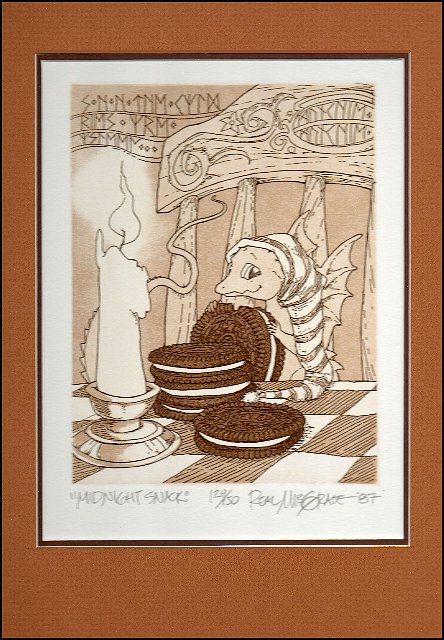
Artist's Notes on How The Print Was Made
by Real Musgrave
"One of my BFA degrees was in printmaking. So I love the look and loved the process but I can hardly imagine doing it now. Too few people realized how intense the process was. Sadly, many collectors actually thought that a color lithograph reproduced from a painting was a superior print. And that was SO much easier! After a while it no longer seemed worth all the effort. My etching press is packed up in grease and stored away. But I hope you can explain to people just why these are considered such a unique art form. And for anyone interested in longevity, the materials are hard to beat. I have seen a 500 year old engraving by Albrecht Durer that is as beautiful today as the day it was pulled.
"The process I used in almost all of my intaglio etchings is called aquatint. It involves stopping out (and then removing) various parts of the plate with a "resist" and then putting the plate in an acid bath several times. First the line work is etched. Then by trial and error --with several proofs for each tone, to check progress-- the mid-tones are etched into the plate. Ink is rubbed onto the plate with cheesecloth, then wiped until just the right amount is left on the roughened areas. The plate is put onto the bed of a hand cranked press. Then a deckled sheet of hand-made cotton rag paper, which has been soaked in water and slightly blotted (to make it absorb the ink better), is placed on that. Finally, layers of felt blankets go on top and the whole thing is cranked through. When it works, you get an etching! But the plate wears out fairly quickly, so not very many..."
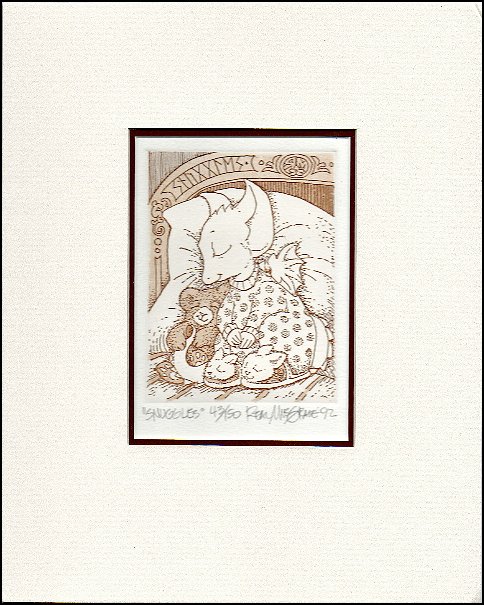
Artist's Notes on How The Print Was Made
by Real Musgrave
"One of my BFA degrees was in printmaking. So I love the look and loved the process but I can hardly imagine doing it now. Too few people realized how intense the process was. Sadly, many collectors actually thought that a color lithograph reproduced from a painting was a superior print. And that was SO much easier! After a while it no longer seemed worth all the effort. My etching press is packed up in grease and stored away. But I hope you can explain to people just why these are considered such a unique art form. And for anyone interested in longevity, the materials are hard to beat. I have seen a 500 year old engraving by Albrecht Durer that is as beautiful today as the day it was pulled.
"The process I used in almost all of my intaglio etchings is called aquatint. It involves stopping out (and then removing) various parts of the plate with a "resist" and then putting the plate in an acid bath several times. First the line work is etched. Then by trial and error --with several proofs for each tone, to check progress-- the mid-tones are etched into the plate. Ink is rubbed onto the plate with cheesecloth, then wiped until just the right amount is left on the roughened areas. The plate is put onto the bed of a hand cranked press. Then a deckled sheet of hand-made cotton rag paper, which has been soaked in water and slightly blotted (to make it absorb the ink better), is placed on that. Finally, layers of felt blankets go on top and the whole thing is cranked through. When it works, you get an etching! But the plate wears out fairly quickly, so not very many..."

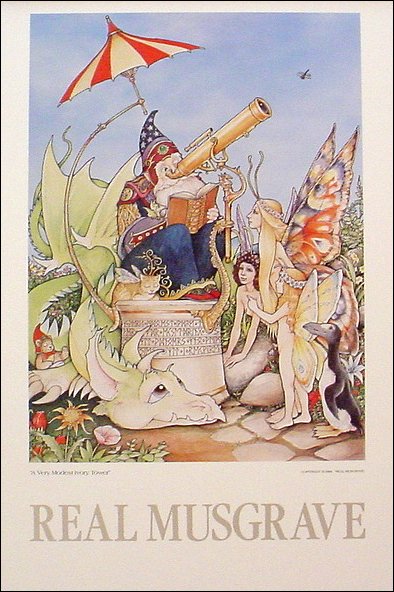
Artist's Notes on How The Print Was Made
by Real Musgrave
"One of my BFA degrees was in printmaking. So I love the look and loved the process but I can hardly imagine doing it now. Too few people realized how intense the process was. Sadly, many collectors actually thought that a color lithograph reproduced from a painting was a superior print. And that was SO much easier! After a while it no longer seemed worth all the effort. My etching press is packed up in grease and stored away. But I hope you can explain to people just why these are considered such a unique art form. And for anyone interested in longevity, the materials are hard to beat. I have seen a 500 year old engraving by Albrecht Durer that is as beautiful today as the day it was pulled.
"The process I used in almost all of my intaglio etchings is called aquatint. It involves stopping out (and then removing) various parts of the plate with a "resist" and then putting the plate in an acid bath several times. First the line work is etched. Then by trial and error --with several proofs for each tone, to check progress-- the mid-tones are etched into the plate. Ink is rubbed onto the plate with cheesecloth, then wiped until just the right amount is left on the roughened areas. The plate is put onto the bed of a hand cranked press. Then a deckled sheet of hand-made cotton rag paper, which has been soaked in water and slightly blotted (to make it absorb the ink better), is placed on that. Finally, layers of felt blankets go on top and the whole thing is cranked through. When it works, you get an etching! But the plate wears out fairly quickly, so not very many..."

